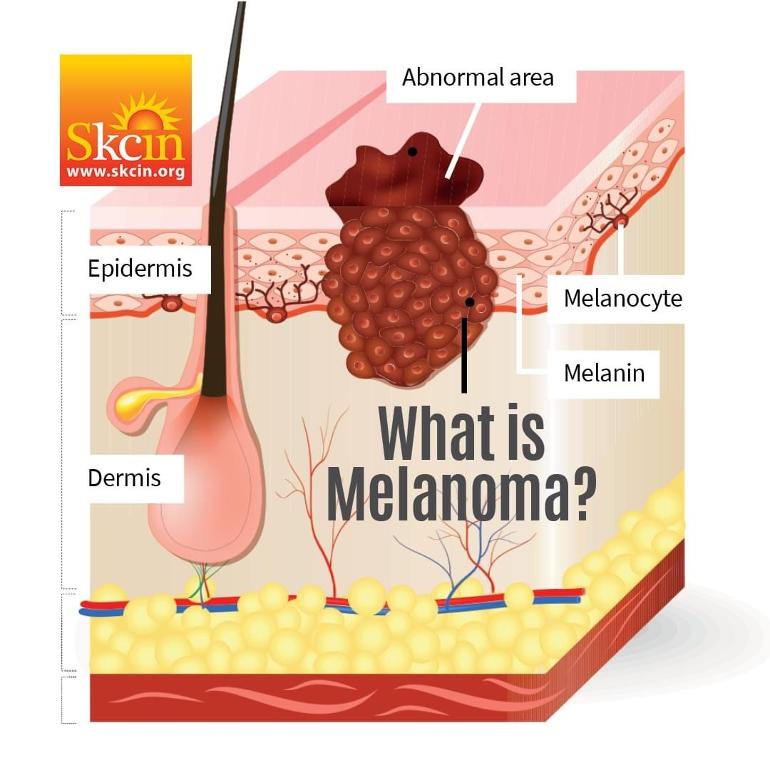Melanoma begins in melanocytes – the cells that produce the pigment melanin that colours the skin, hair and eyes. Melanocytes also form moles, where melanoma often, but not always develops.
These cancerous growths develop when unrepaired DNA damage to skin cells (most commonly caused by over-exposure to UV radiation) trigger mutations that lead the skin cells to multiply rapidly and form malignant tumours.
As with all skin cancers, melanoma can often be seen on the skin, making it easier to detect in its early stages. But, if left undetected, melanoma can spread to distant sites or organs.
Once melanoma has spread to other parts of the body it is referred to as ‘metastatic melanoma’ at this stage it becomes very difficult to treat and prognosis is poor, so early detection, diagnosis and treatment is vital.
Melanoma often arises from otherwise normal appearing skin (about 75%) or from within a mole or freckle, which starts to grow larger and change in appearance.
Always check your skin once a month for the early warning signs and if you notice anything new, unusual or changing - seek immediate advice from your GP or dermatologist.
For all the advice, guidance and self-management tools you need to reduce your risk of skin cancer and detect the early warning signs - install the Skcin App for FREE!
Go to: app.skcin.org
(using Safari on iOS and Chrome on Android)
Tap ‘INSTALL’ and ‘Add to Home Screen’
@SkcinCharity every month is #skincancerawarenessmonth
